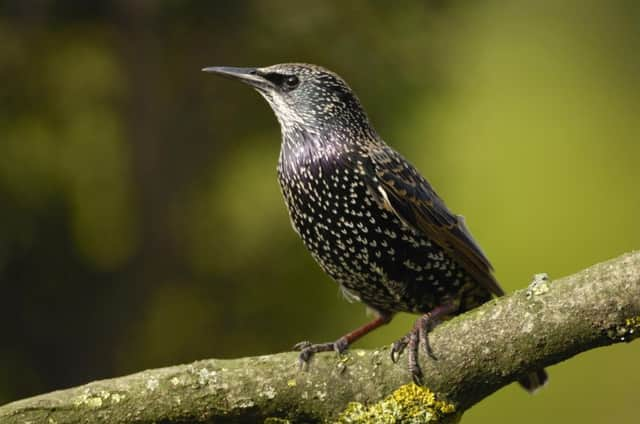House sparrow top of pecking order in Scotland


An annual citizen science project organised by wildlife charity RSPB shows an increase in the number of birds spotted in gardens across the UK, with two species earmarked for urgent conservation action coming out as the most common visitors.
The new study saw the noisy and gregarious house sparrow continuing to rule the roost as the species spotted most often north of the border.
Advertisement
Hide AdAdvertisement
Hide AdMeanwhile starlings swooped up a slot to take second billing, knocking the chaffinch into third place.
There were also some big climbers in the top 20, with robins jumping three places to land at number six and the tree sparrow now perched at number 16 – its highest ranking in a decade.
The red-breasted favourite has also come out as Scotland’s most widespread garden bird, being seen in nine out of ten gardens.
The tiny and eye-catching coal tit took the biggest tumble, plummeting to number 13 from ninth position last year.
This year’s Big Garden Birdwatch saw more than 43,000 people across Scotland counting wildlife in their gardens and parks over the course of one hour during a weekend at the end of January. Overall more than 632,000 birds were spotted north of the border, part of a UK-wide total exceeding 8.5 million – an increase of 100,000 from 2014.
The findings have been welcomed by conservationists.
Keith Morton, species policy officer at RSPB Scotland, said: “It’s great that so many people took part in this year’s Big Garden Birdwatch.
“Both house sparrows and starlings, the top two birds in our 2015 results, are red list species, and so your results help us at RSPB Scotland to paint a picture of how they and other birds are faring over winter.”
The latest results suggest the long-term decline of house sparrows is continuing to slow, with it remaining the most commonly spotted bird across the whole of the UK.
Advertisement
Hide AdAdvertisement
Hide AdHowever, the species remains a conservation priority as numbers have fallen by 57 per cent since the first Birdwatch in 1979.
Nationwide studies revealed a 71 per cent decline between 1977 and 2008, but the latest Breeding Bird Survey indicates recent increases in Scotland, Wales and Northern Ireland.
Starlings, although they have this year jumped into second place, are also of high concern as populations have plummeted by an alarming 80 per cent over the past 35 years.
RSPB conservation scientist Dr Daniel Hayhow said: “Many garden birds are in desperate need of our help.
“During winter, birds need extra food and water, a safe place to shelter and make their home.
“Gardens providing these things are an invaluable resource for birds and are likely to have a significant effect on their numbers, perhaps even playing a pivotal role in reversing some declines.”
But the charity warned the count does not necessarily present an accurate picture of how species under threat of extinction are faring.
“Big Garden Birdwatch helps us understand some of the trends in bird numbers,” Mr Morton added.
Advertisement
Hide AdAdvertisement
Hide Ad“However, a decline in ranking in one year doesn’t necessarily mean a cause for concern.
“For example, warmer weather overseas might explain why some of our winter visitors aren’t so plentiful in the Birdwatch results this year.”
The survey revealed a notable decline in the number of some winter migrants seen over the Birdwatch weekend, with both bramblings and waxwings diving down the rankings.
It is believed this could be as a result of good weather conditions on the continent over the winter, reducing the need for some species to migrate to Britain.
Mr Morton stressed the key role gardens play in providing a haven for wildlife all year round.
“As we move into spring there are lots of ways you can give nature a home, from planting the right trees and shrubs to building a log pile,” he said.
“Birds need a reliable source of food, so once they know to find it in your garden they will keep coming back.”
For the second year running, Birdwatch participants were also asked to take note of other wildlife seen around their homes.
Advertisement
Hide AdAdvertisement
Hide AdScots were were asked to look out for slow worms and grass snakes at any time of year, as well as deer, squirrels, badgers, hedgehogs, frogs and toads.
The results of the wider survey are expected next month.